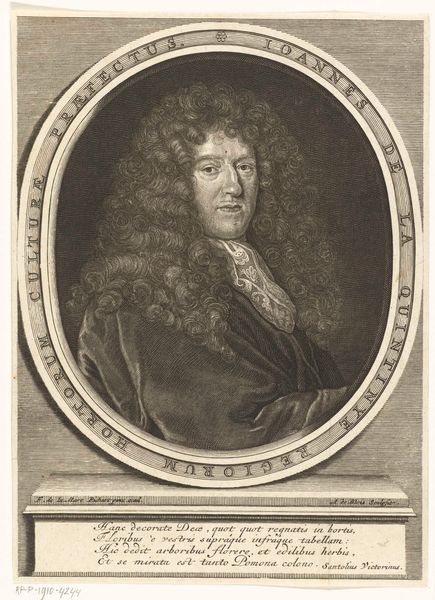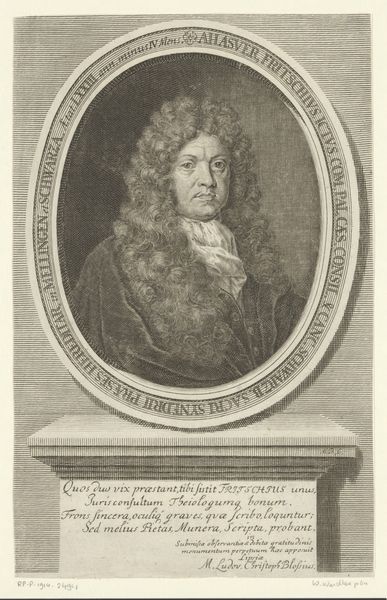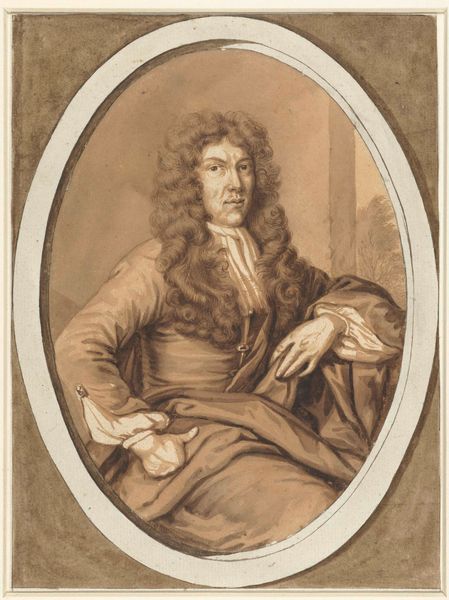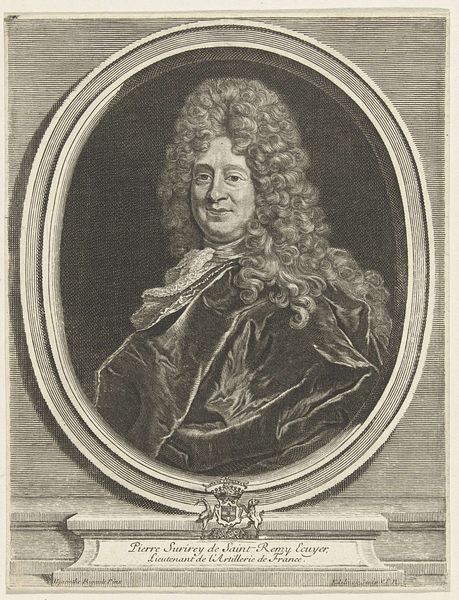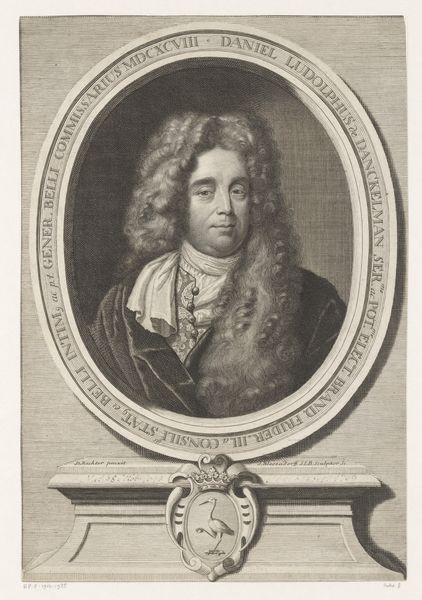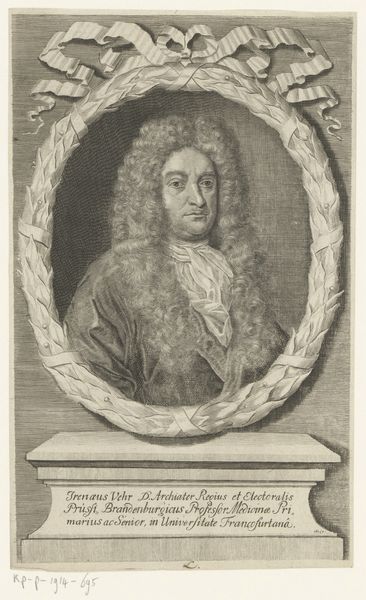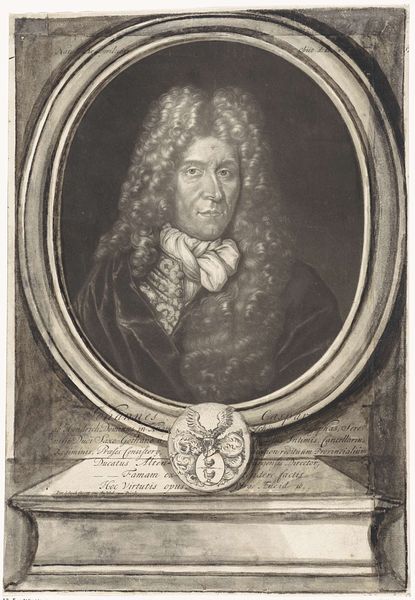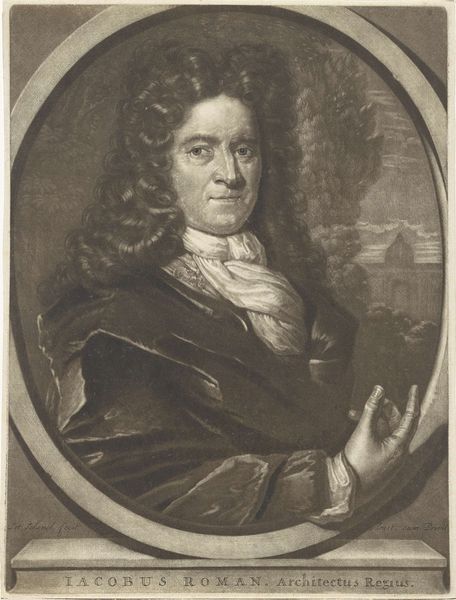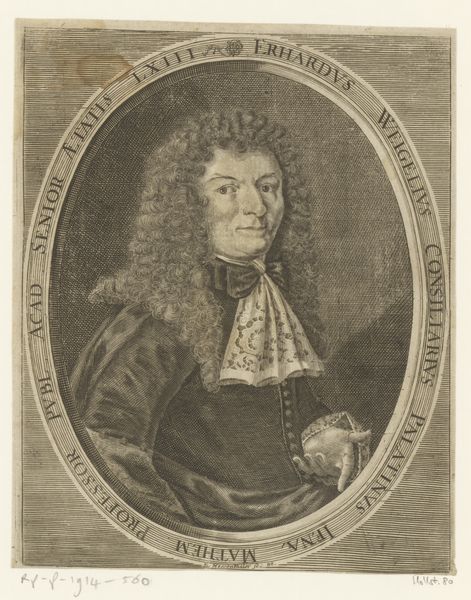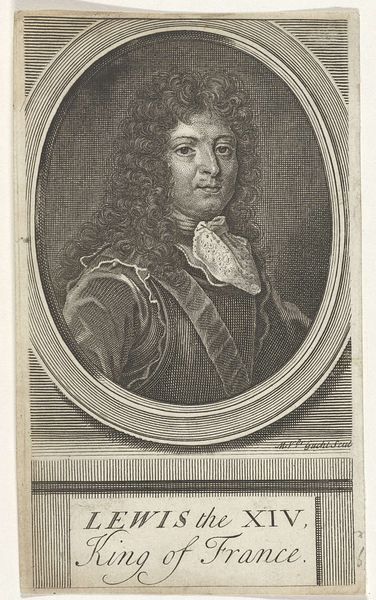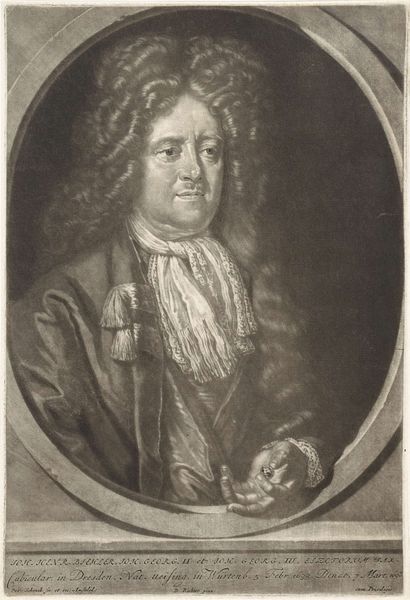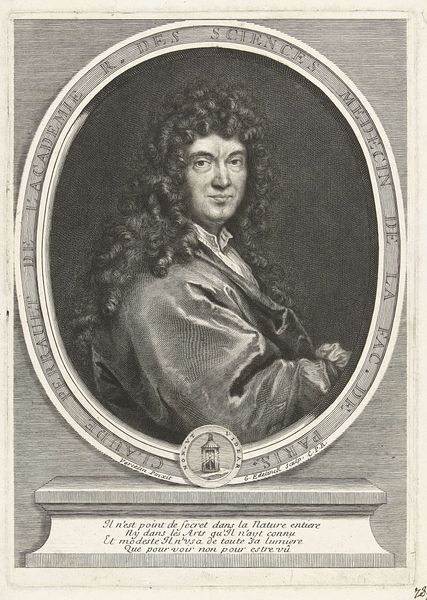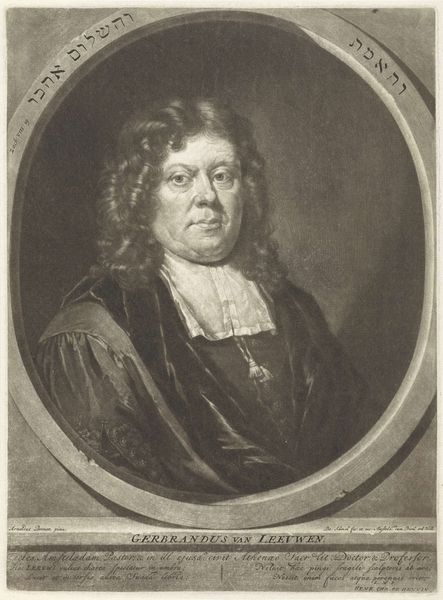
print, engraving
#
portrait
#
baroque
# print
#
charcoal art
#
history-painting
#
engraving
#
portrait art
Dimensions: height 261 mm, width 183 mm
Copyright: Rijks Museum: Open Domain
Editor: This is Pieter Schenk's "Portret van Christian Wermuth" from 1701, housed at the Rijksmuseum. It's an engraving, and what immediately strikes me is the incredible detail achieved through this medium. How do you see this print, what stands out? Curator: Well, for me, it's all about the labor involved. Engravings like this weren't mass-produced like today’s prints. Each one demanded incredible skill and time from the engraver, Pieter Schenk, but also consider the labor and materials involved in creating the plate itself, likely copper. How does the social status of the sitter interact with the means used to depict it? Editor: You mean, was engraving a common medium for portraiture at the time, or did it elevate or demean Wermuth's status? Curator: Precisely. Was the choice of engraving influenced by its cost-effectiveness or the desire to associate with a certain class of artisanal production? Also, think about the distribution network; prints like this often circulated among a specific intellectual or merchant class. To whom was this image made accessible? Editor: It looks like he might be holding a medal? How does the medal relate to his status, and is its form mimicking coin production? Curator: Good eye! The inscription on the print suggests Wermuth was a medallist – someone who designed and produced medals and coins. Seeing that, we need to consider the entire economic ecosystem around this man and his portrait: the mines where the metal was extracted, the workshops where he worked, the systems of patronage that sustained him. Editor: So it becomes less about just the man in the portrait and more about this complex web of materials, production, and distribution in the 18th century? That gives me a whole new perspective on portraiture. Curator: Exactly! We shift the focus from individual genius to collaborative processes and material conditions that make the artwork—and the sitter's identity—possible.
Comments
No comments
Be the first to comment and join the conversation on the ultimate creative platform.
